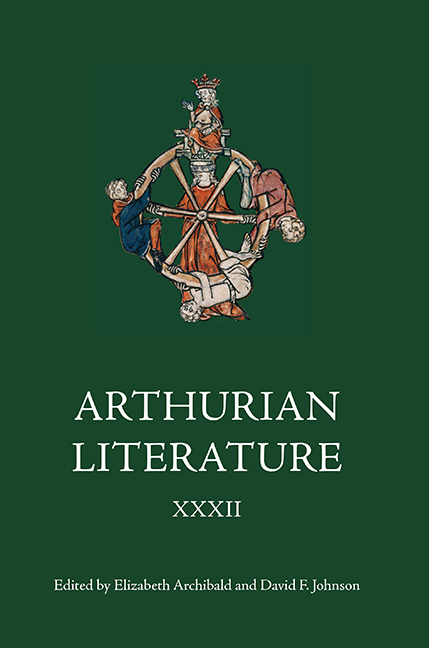Book contents
- Frontmatter
- Contents
- List of Illustrations
- General Editors’ Foreword
- List of Contributors
- I Wounded Bodies: Kingship, National Identity and Illegitimate Torture in the English Arthurian Tradition
- II The Place of Emotion: Space, Silence and Interiority in the Stanzaic Morte Arthur
- III Another Source for Malory’s ‘Tale of Sir Gareth’
- IV ‘Warre and Worshyppe’: Depictions of Battle in Malory’s Le Morte Darthur
- V Malory’s ‘Chivalric Cliques’: Public and Private Felyshyp in the Arthurian Community
- VI Scribal Modifications to Concluding Formulae in the Winchester Manuscript
- VII Heraldic Imagery in the Embroidered Tristan Narratives
- VIII Update to the List of Manuscripts of Geoffrey of Monmouth’s Historia Regum Britanniae
- Contents of Previous Volumes
VI - Scribal Modifications to Concluding Formulae in the Winchester Manuscript
Published online by Cambridge University Press: 11 May 2021
- Frontmatter
- Contents
- List of Illustrations
- General Editors’ Foreword
- List of Contributors
- I Wounded Bodies: Kingship, National Identity and Illegitimate Torture in the English Arthurian Tradition
- II The Place of Emotion: Space, Silence and Interiority in the Stanzaic Morte Arthur
- III Another Source for Malory’s ‘Tale of Sir Gareth’
- IV ‘Warre and Worshyppe’: Depictions of Battle in Malory’s Le Morte Darthur
- V Malory’s ‘Chivalric Cliques’: Public and Private Felyshyp in the Arthurian Community
- VI Scribal Modifications to Concluding Formulae in the Winchester Manuscript
- VII Heraldic Imagery in the Embroidered Tristan Narratives
- VIII Update to the List of Manuscripts of Geoffrey of Monmouth’s Historia Regum Britanniae
- Contents of Previous Volumes
Summary
In his new edition of the Morte Darthur, P. J. C. Field calls the Winchester Manuscript ‘the most important single piece of evidence for what Malory intended to write’ about King Arthur and his knights. The manuscript has served as the base text for all major editions of the Morte except that of James Spisak since Eugène Vinaver's 1947 edition, and one of the most important ways in which the Winchester Manuscript diverges from the Caxton incunable is by subdividing the narrative differently. Where Caxton's edition subdivides into 507 chapters and twenty-one books, the Winchester Manuscript includes five closing passages that refer to Malory as author. Together with a sixth closing passage that appears at the end of Caxton's edition of the Morte Darthur (the final gathering of the Winchester Manuscript is missing), these authorial closing passages indicate the Morte Darthur contains six books. However, the Winchester Manuscript also includes a number of other strongly worded transition passages and a variety of visual features that mark the openings and closings of both books (the largest narrative segments in the Morte Darthur) and stories (smaller subdivisions within books). These features have led scholars to propose that the Morte contains three, four, five, seven or eight books, each of which contain many stories.
While the presence of the references to Malory shows that the Winchester scribes remained more faithful to their exemplar's subdivisions than did Caxton, the scribes also modified the Morte Darthur's divisions in the Winchester Manuscript. At the very least, the scribes decided how to employ the decorative features – initials, blank space, rubrication and elevated script – which have influenced readers’ opinions about the number and nature of divisions appearing throughout the manuscript. The scribes appear to have added at least three initials that did not appear in their exemplar. At one point, they also ignore the apparently authorial claim that a new section should begin on a new page, and instead skip only one line before beginning the next book. Scribes edited more than the decorative features of the manuscript, however. They also edited the text of the manuscript to improve both the sense of the narrative and the aesthetics of the page.
- Type
- Chapter
- Information
- Arthurian Literature XXXII , pp. 123 - 154Publisher: Boydell & BrewerPrint publication year: 2015



